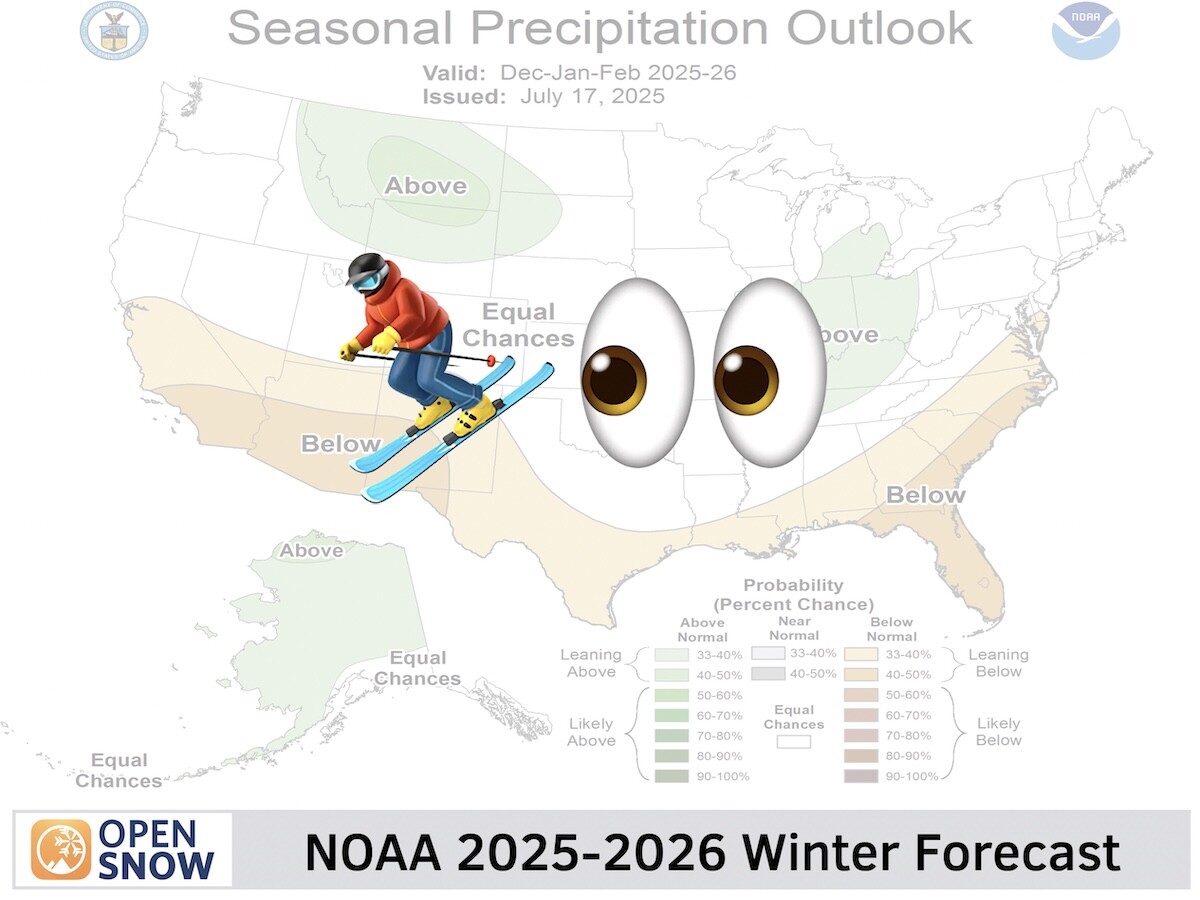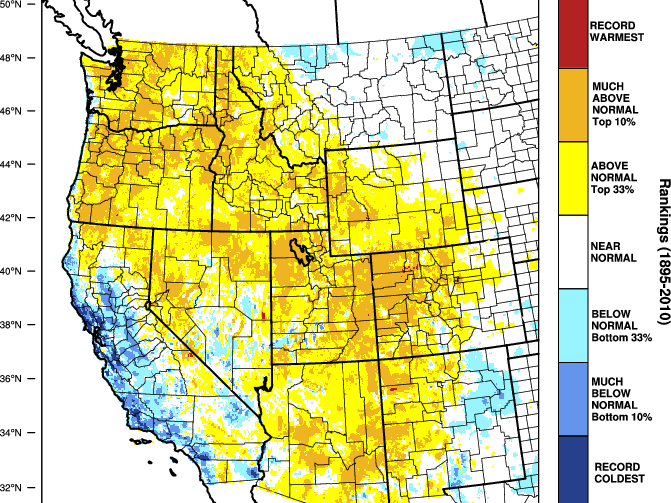News

By Sam Collentine, Meteorologist Posted 5 years ago October 29, 2019
Calculating & Offsetting the Carbon Footprint of OpenSnow

The goal of OpenSnow is to provide the best weather forecasts to help you plan your next outdoor adventure. Our service now reaches millions of outdoor enthusiasts and we couldn’t be more proud of what we’ve built and what’s still to come.
But over the course of building our business, OpenSnow, like every other business, has and will continue to use the finite resources of our planet. This has come in the form of burning fossil fuels that we use for all aspects of running our business.
Here's how we are taking the small step to offset, reduce, and educate others on the carbon footprint of OpenSnow.
First, we'll detail how we calculated our carbon footprint. Second, we hope to answer all of your questions in the Carbon Offset & Climate Change FAQ section.
Calculations
During the summer of 2019, we spent time researching the metrics that would allow us to calculate our carbon footprint.
Our carbon footprint for 2018 was 65.51 metric tons. We have rounded this up to 100 metric tons to account for any shortcomings in our calculations.
Driving Footprint = 28.28 metric tons
- Based on research from the EPA, the average passenger vehicle emits about 404 grams of CO2 per mile and a typical passenger vehicle emits about 4.6 metric tons of carbon dioxide per year. This assumes the average gasoline vehicle on the road today has a fuel economy of about 22 miles per gallon and drives around 11,500 miles per year. Every gallon of gasoline burned creates about 8,887 grams of CO2 and every gallon of diesel burned creates about 10,180 games of CO2.
- Seven full-time employees driving 10,000 miles per year (70,000 total miles) would equate to 28.28 metric tons of CO2 emissions.
- 404 grams x 70,000 miles = 28,280,000 grams or 28.28 metric tons of CO2
Flying Footprint = 3.82 metric tons
- Based on research from Wake Forest University, an average plane produces a little over 24,040 grams of carbon dioxide per mile and 109 grams of CO2 per passenger per mile.
- Seven full-time employees flying 5,000 miles per year (35,000 total miles) would equate to 3.82 metric tons of CO2 emissions.
- 109 grams x 35,000 miles = 3,815,000 grams or 3.82 metric tons of CO2
Office Footprint = 16.16 metric tons
- Based on research from Wake Forest University, an average kilowatt-hour of energy creates 513 grams of carbon dioxide.
- Seven full-time employees using 4,500 kilowatt-hours per year (31,500 total kilowatt-hours) would equate to 16.16 metric tons of CO2 emissions.
- 513 grams x 31,500 kilowatt-hours = 16,159,500 grams or 16.16 metric tons of CO2
Server Footprint = 17.26 metric tons
- Based on our total server costs, reducing this cost by about 75% to account for all other inputs of the cost, the US average of 11 cents per kilowatt-hour, and knowing that an average kilowatt-hour of energy creates 513 grams of carbon dioxide, we calculate that powering our servers creates 17.26 metric tons of CO2.
- $3,700 / 0.11 cents = 33,636 kilowatts x 513 grams = 17,255,454 grams or 17.26 metric tons of CO2
Total 2018 Footprint = 65.51 metric tons of CO2
Source → Greenhouse Gas Emissions from a Typical Passenger Vehicle
Source → BlueSkyModel.org
Source → State and Trends of Carbon Pricing 2018
Source → Greenhouse Gases Equivalencies Calculator - Calculations and References
Source → Average Price of Electricity to Ultimate Customers by End-Use Sector
Source → Energy Consumption-based Pricing Model for Cloud Computing
Carbon Offset Program
After we calculated our 2018 carbon footprint, we then found a non-profit organization called Cool Effect, which helps to facilitate our offset purchase. We chose to support the installation of clean cookstoves for schools in the country of Malawi, which is located in southeast Africa.
Deforestation is at an all-time high in Malawi, and this program will install clean cookstoves, help feed the children, and conserve local resources. The clean cookstoves use less wood and emit less carbon dioxide compared to a traditional fire.
We offset 100 metric tons of carbon emissions to support this project at a price of $8.79 per metric ton. The cost of the offset totaled $879.00, with more than 90% of this total going directly to support the program. The remaining 9.87% supports Cool Effect’s research and administrative fees.

This clean cookstove program has achieved the Gold Standard. The Gold Standard is considered to be the highest standard in the world for carbon offsets and ensures that projects that carry its label meet key environmental criteria.
Carbon Offset & Climate Change FAQ
Below, we hope that we've addressed any questions that you can think of. If we haven't covered something that's on your mind, feel free to drop us a note at [email protected].
This is great, but shouldn't OpenSnow be doing more about climate change?
We are expert snow forecasters and not experts in climate science or public policy, so this is a starting point for us. We learned how to calculate our carbon impact and how to offset this impact. Next, we'll explore how we can expand this program to potentially offset the carbon impact of our audience when they travel to and from the mountains.
I don't believe that climate change is a big deal.
Even though nearly all scientists agree that humans are having a significant impact on our atmosphere and our planet (sources below), let's assume they are wrong and you are right. In this case, there is still no downside to us donating money to improve the lives and environment of people who are less fortunate than us.
Why are you getting involved with a politically motivated and sensitive subject like climate change?
Our primary goal is to provide the best snow and mountain weather forecasts, and we also enjoy explaining earth science in a relatable way. Paying attention to the human impacts on our climate is a scientific topic and not one that should be politically motivated or sensitive. Based on current scientific research, it makes sense to us that human-caused carbon emissions are impacting the climate, and we have chosen to offset our carbon emissions.
You do not make physical products, so your carbon footprint is zero, right?
Our calculations include driving and flying for business trips (including driving and flying to and from the mountains to enjoy the pow!), emissions from the electricity used to power our home offices, and emissions from the electricity used to power the servers that we use to provide you with our apps and websites.
Are human-caused carbon emissions really impacting our planet?
The evidence is becoming increasingly clear that carbon emissions from human activities are having a significant impact on the health and climate of our planet.
Source → AMS 2018 State of the Climate
Source → IPCC Summary for Policy Makers
Are humans causing the recorded warming temperatures?
Carbon dioxide, methane, and other gases in our atmosphere absorb and radiate heat back toward Earth. Human activities, like burning coal, oil, and natural gas, have increased the amount of carbon dioxide and other greenhouse gases, and these gases are the likely causes for the majority of the warming in BOTH the Earth's atmosphere and the Earth's oceans.
Source → How Carbon Dioxide impacts Temperature
Source → What is Warming the World (easy-to-understand graphs)
Source → Compare Factors that Influence Earth's Temperature
Is the science of climate change "settled"?
Science is never settled because new hypotheses should always be developed and tested. And because science is never 100% settled, we also should not wait for perfect agreement before discussing and implementing alternatives to solve a problem. In the case of forecasting future climate change, it seems that the most uncertainty exists in how clouds and aerosols impact temperatures.
Source → Paper by Seinfeld et al 2016
How will climate change impact snow and the ski industry?
Climate change's primary threat to snow is warming temperatures, and this will mean less snow (and more rain) at lower elevations, during the shoulder seasons of spring and fall, and likely later starts and earlier ends to the ski resort season.
Below is a quick summary of our understanding of this issue:
- There is currently NO long-term trend in the amount of precipitation in the United States.
- There is currently NO long-term trend in the western US snowpack for higher elevation areas (higher than 10,000 feet).
- There IS a declining trend in the western US snowpack for lower elevation areas (lower than 10,000 feet).
- It is possible that future weather patterns could change, bringing more or less snow and precipitation to certain regions, but confidence in the details of potential future changes to weather patterns is very, very low.
Source → Declining Western U.S. Snowpack (science paper)
Source → Climate Change in Colorado (summary PDF)
Source → Climate Change and Variability (video of Dr. Jim Steenburgh)
Other than warming temperatures, what other impacts are being observed?
Oceans have become more acidic due to the increased absorption of carbon dioxide, many of the Earth’s glaciers and ice sheets are melting, and this leads to sea levels rising at an increasing rate. Sea levels not only rise due to melting glaciers and ice sheets but also due to water expanding as it warms.
Source → The Carbon Cycle
Source → World of Change: Arctic Sea Ice
Source → World of Change: Ice Loss in Glacier National Park
Source → Thermal Expansion and Sea Level Rise
What is a carbon offset?
Carbon offsets are a reduction in emissions of carbon dioxide to compensate for emissions made elsewhere. Offsets are measured in metric tons of carbon dioxide-equivalent. One metric ton of carbon offset represents the reduction of one metric ton of carbon dioxide or its equivalent in other greenhouse gases.
Source → Carbon Offsets Explained
What kinds of carbon offsets are available to purchase?
There are many carbon offset programs to choose from. The programs include developing renewable energy, capturing methane from landfills or livestock, distributing cleaner cooking stoves in the developing world, reducing food waste, forest protection/restoration, and capturing carbon pollution from the source.
Source → Cool Effect Projects
How expensive are carbon offsets to purchase?
There is no fixed price on carbon. The cost of an offset varies from project to project, depending on how expensive it is to run the given program. Most offset programs cost $4-$14 per metric ton.
Is OpenSnow doing anything else to support the outdoor community?
In addition to offsetting our carbon emissions by supporting the installation of clean cookstoves in Malawi, we are also thinking about how to implement a broader program to support both environmental research and non-profit organizations that serve mountain communities. We are planning to create this program and make our first contributions in 2020.
Have comments?
We would love to hear your thoughts. Because internet comments can often get a little out of hand, we do not frequently check or respond to the comments left on our site (though of course, you're welcome to leave a thought below). To message us directly with a reply from a real human, please send an email to [email protected]. Thanks!
Download the OpenSnow and stay tuned to our forecasts for the latest weather updates.
Sam Collentine
About The Author




